Party Time
The history of San Antonio's Fiesta is as colorful as the festival itself
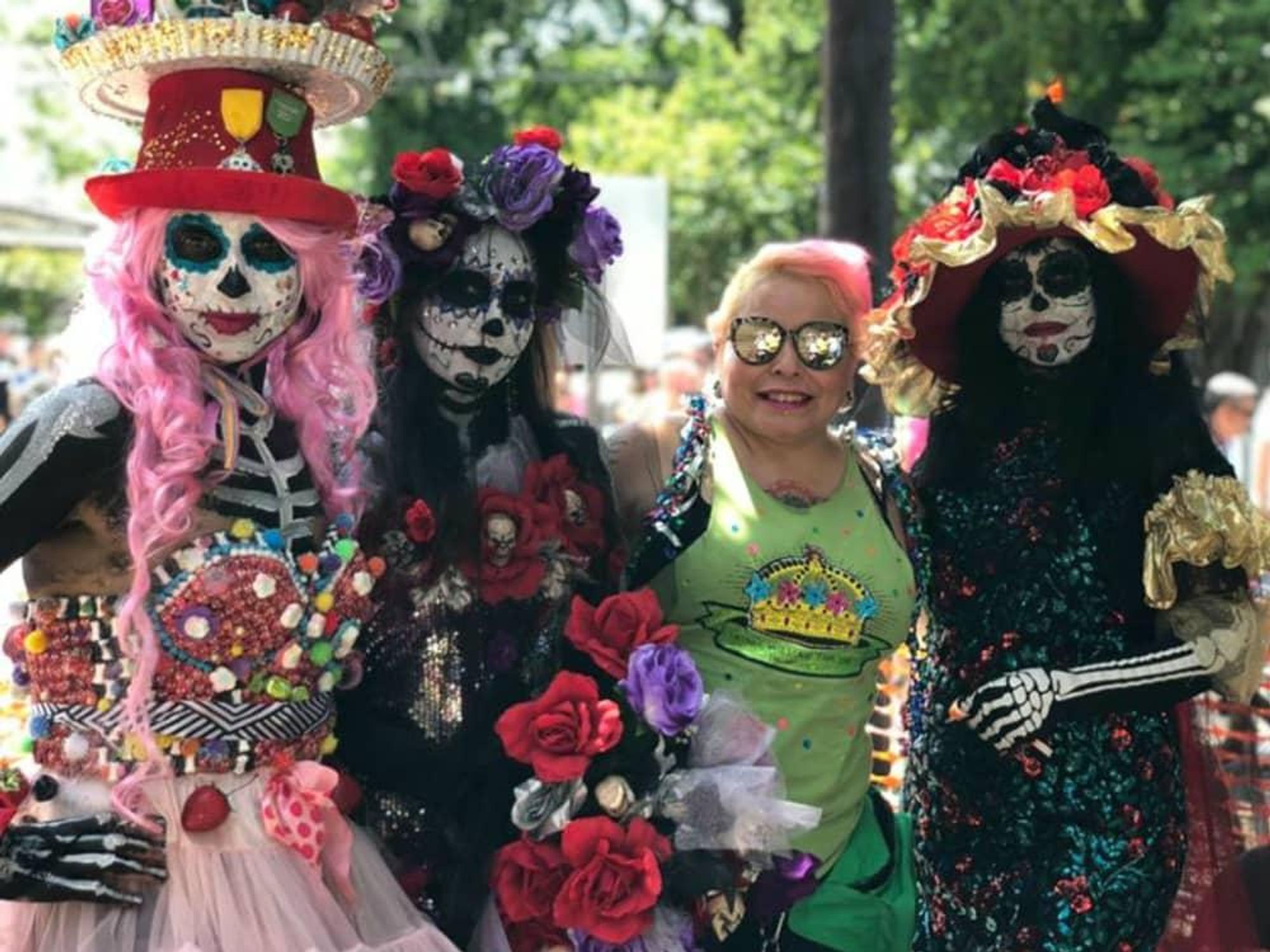
It's Fiesta in San Antonio — a season that seems to get longer and start earlier every year. Today, it can feel like a nonstop party across the city, one filled with flower crowns, parades, and medals.
But the history of Fiesta is as colorful as the elaborately embroidered dresses many San Antonian women wear during the celebration. This year, while you’re sorting through piles of Fiesta medals or standing in a long line for chicken-on-a-stick, why not spend that wait time reflecting on how these traditions came to be?
A royal — and floral — celebration
Of course, it makes sense to start at the beginning. In 1891, San Antonio residents wanted to pay tribute to the defenders of the Alamo and those who fought in the decisive Battle of San Jacinto with a colorful parade called "the battle of flowers."
An organization of well-to-do local women initiated the Battle of Flowers Association to help with the annual festivities. As the organization grew, so did Fiesta, which was then a series of elaborate, elegant celebrations all culminating in the the flower parade as the main act.
The concept of Fiesta royalty came about in 1895 when the organizers chose a Fiesta queen. Some 14 years later, organizers had established an Order of the Alamo, which would involve a formal coronation of a Fiesta queen.
Organizers also added a king to the order early on, but the names and traditions of nearly all of those original monarchs lasted just a few years. Only King Antonio, conceived in 1916, has lasted this long.
A (very long) Night in Old San Antonio
Fiesta grew with A Night In Old San Antonio. In the years following World War I, NIOSA was one of the most popular Fiesta events, as many people would flock to La Villita every night to enjoy cuisine and music, and celebrate the various ethnic traditions that have made their impact on San Antonio.
NIOSA started as a so-called “Indian festival” in 1938, a street fair-style affair held on a single autumn evening to raise funds for the San Antonio Conservation Society.Society members originally made all of the food at their homes and then brought it to this festival, an homage of sorts to the chili queens who inhabited the downtown plazas in prior decades.
The festival underwent different names and formats until just after World War II when Fiesta planners invited the conservation society to hold its event during Fiesta.
The first “Night In Old San Antonio” held during Fiesta occurred in 1948, and was an instant hit. A decade later, the conservation society expanded the event to four nights.
The party grows bigger
Just before the outbreak of World War II, members of the Texas Cavaliers organization had seen colorfully decorated barges and floats in what they described as “floating gardens” in Mexico City. Upon returning home, the Cavaliers realized that with improvements happening along the San Antonio River downtown, there was an opportunity to recreate that scene in the Alamo City. Thus, the river parade was born in 1941.
Later that decade, local civil engineer Reynolds Andricks, a Fiesta entrepreneur, proposed a lighted night parade that would make for beautiful imagery and a unique event. His idea became known as the Flambeau Parade — still one on Fiesta's most treasured events.
“Flambeau” means burning torch or tall, decorated candlestick in French. Back then, parade marchers would hold either those items or flashlights to guide their way through downtown streets and capture the imagination of spectators.
By the 1950s, Fiesta had grown so large that the local chamber of commerce launched a separate organization, Fiesta San Antonio Commission, to help plan and oversee the events.
Fiesta yesterday and today
By the end of the 20th century, Fiesta activities had spread out further from downtown and into different neighborhoods and even onto the military bases. Many signature Fiesta events grew so large that they moved to entirely different venues.
Take the Oyster Bake, which was just a gathering of St. Mary’s University alumni on the downtown banks of the river each year beginning in 1916. They were there to enjoy beer and oysters and raise funds for scholarships and campus programs. Today, it's a massively popular foodie event, attracting Fiesta-goers from across the city to the St. Mary's campus.
Likewise, Alamo Heights Rotarians began the Alamo Heights Night in the late '80s as a family-friendly block party at the city swimming pool. It wasn’t long before thousands began to show up. Alamo Heights Night got so big it moved to the University of the Incarnate Word, its current home.
Taste of New Orleans was originally Fiesta West, a modest San Antonio Zulu Association celebration at Rosedale Park on the West Side. The association shifted Fiesta West to St. Paul’s Square on the East Side, where it officially became Taste of New Orleans in 1983. Two years later, the event moved to Sunken Garden Theater where it remains today.
Cornyation, the popular satirical take on Fiesta royalty, San Antonio elites, and other noted personalities, originated in the early 1950s when the conservation society invited San Antonio Little Theater — now Public Theater San Antonio — to offer additional Fiesta entertainment. The event began as costumed pageantry, but the 1960s heralded the arrival of more daring high jinks on-stage and, as such, it became too much for the conservation society to handle. Cornyation would soon be no more.
In the 1980s, one of the first Cornyation organizers, Ray Chavez, decided the time was right to bring back the zany event. With help from the community, Chavez re-launched Cornyation at the Bonham Exchange with skits that pushed the envelope. Cornyation has taken place in different venues over the years, but seems to have found a home at Empire Theater. Today it's a raunchy, can't-miss part of the celebration.
The predecessors of the King William Fair were informal festivals in the King William neighborhood, beginning in the 1950s. Not long after King William Association was created in the late 1960s, the group developed a more formal organization for the fair.
The event initially took place in King William Park, but it quickly grew in popularity, attracting hundreds, then thousands of partygoers. It has since expanded to a neighborhood-wide event, featuring arts and food booths, music stages and children’s activities across several blocks.
Some newer events, such as Fiesta Castle Hills, have very modest beginnings. This is the first year it’s an official Fiesta function, but it started a decade ago as a free, family-friendly celebration for the North Side suburb. Though rains fell on the inaugural event day, they didn’t damper the enthusiasm of the families who enjoyed refreshments, meeting with artisans, and children’s activities. Much of that spirit remains at Fiesta Castle Hills.
That's just the tip of the iceberg. So, the next time you're watching Mexican traditions recreated at A Day in Old Mexico or find yourself dancing to Tejano artists at Fiesta de los Reyes, take time to imagine how those events were born. After all, history can be a party, too.

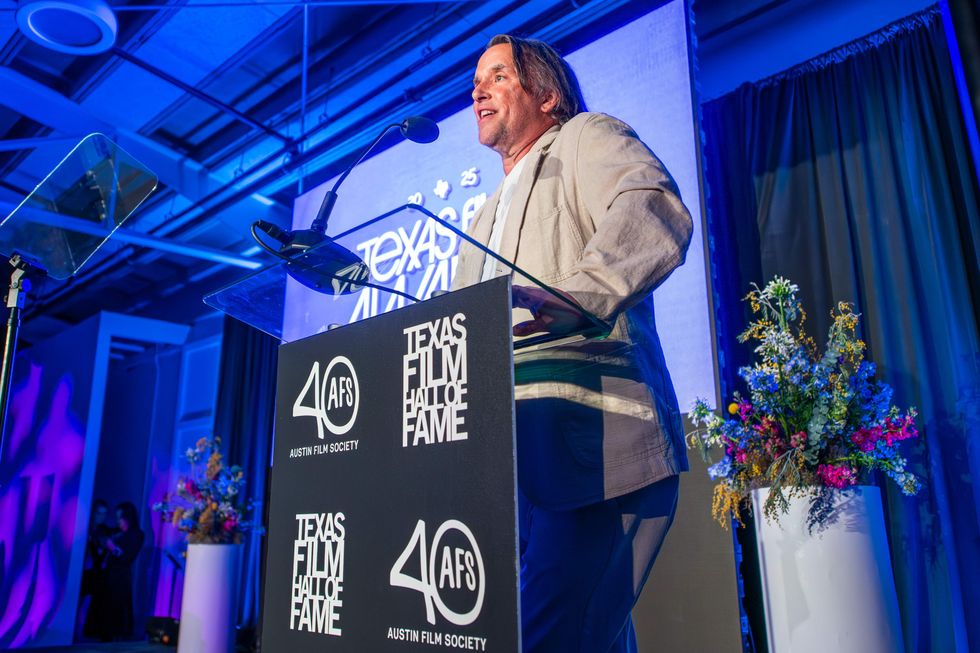 Richard LinklaterPhoto by David Brendan Hall
Richard LinklaterPhoto by David Brendan Hall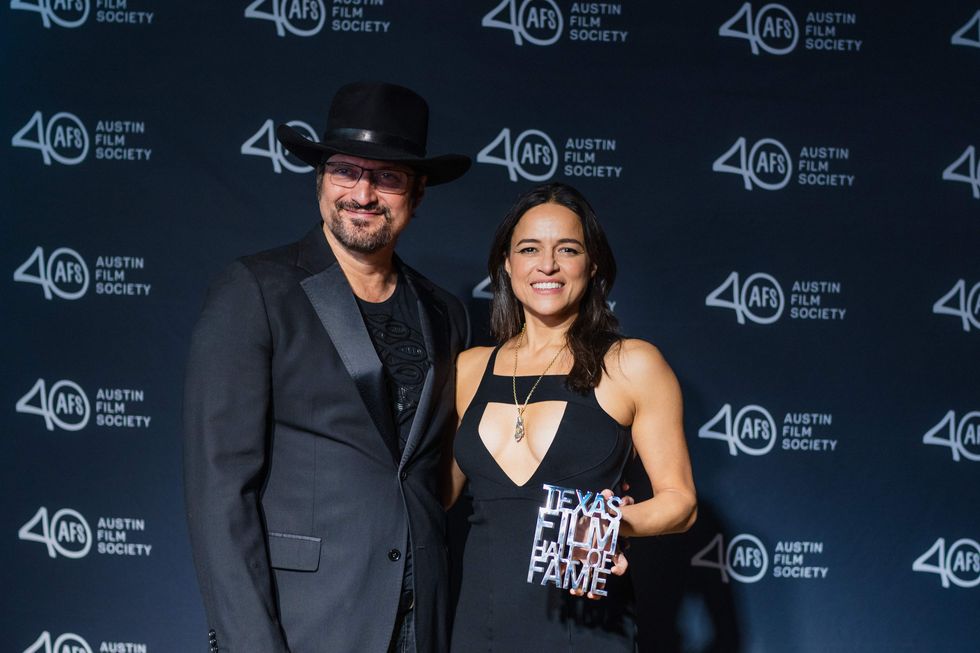 Robert Rodriguez and Michelle RodriguezPhoto by Lauren Slusher
Robert Rodriguez and Michelle RodriguezPhoto by Lauren Slusher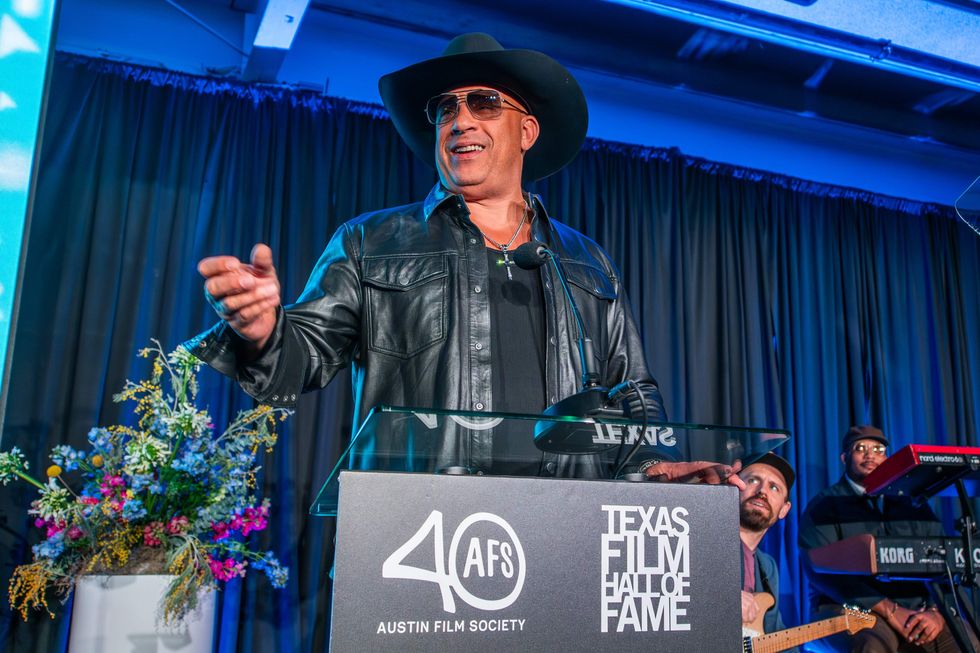 Vin DieselDavid Brendan Hall
Vin DieselDavid Brendan Hall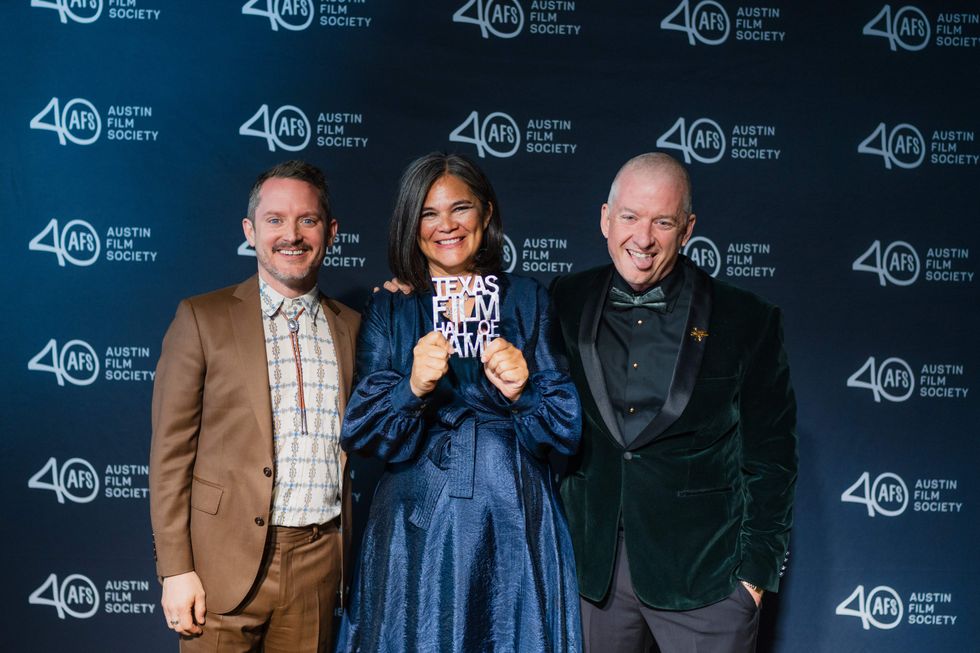 Elijah Wood, Tim and Karrie LeaguePhoto by Lauren Slusher
Elijah Wood, Tim and Karrie LeaguePhoto by Lauren Slusher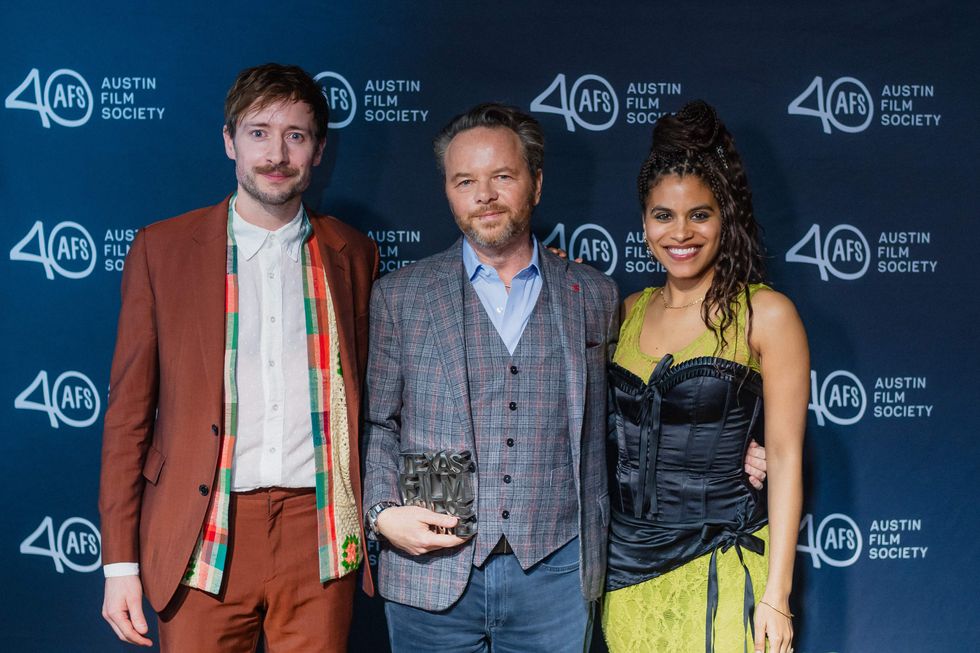 David Rysdahl, Noah Hawley, and Zazie BeetzPhoto by Lauren Slusher
David Rysdahl, Noah Hawley, and Zazie BeetzPhoto by Lauren Slusher